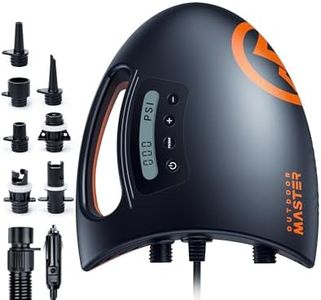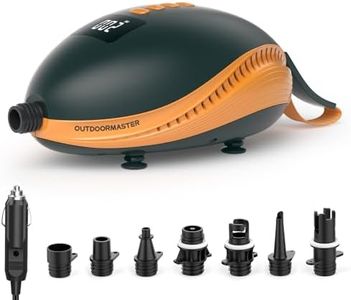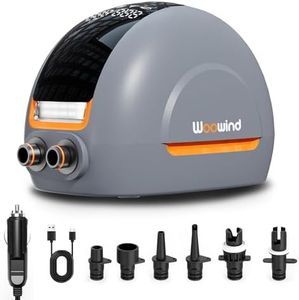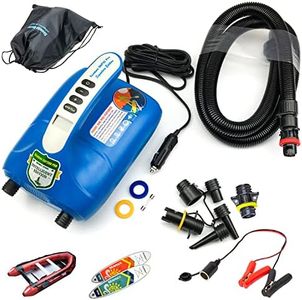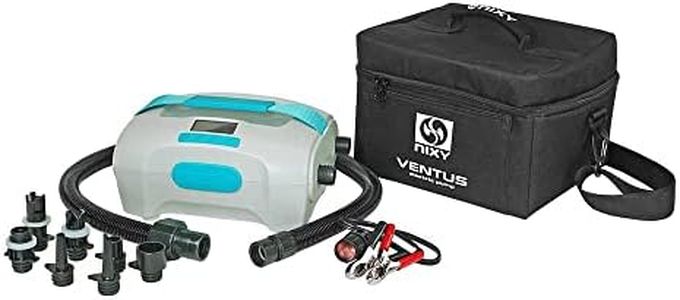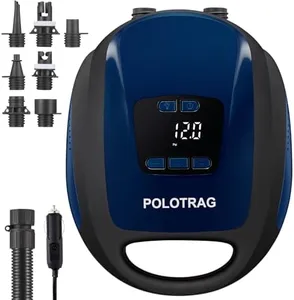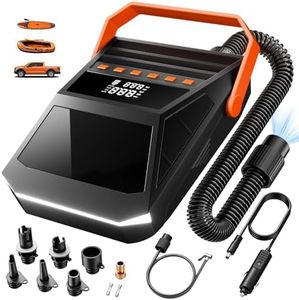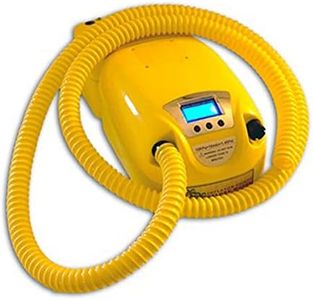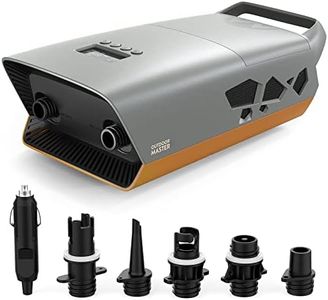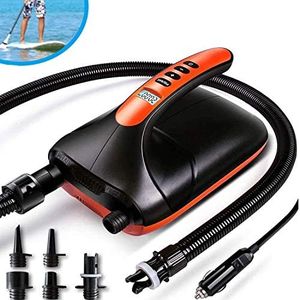We Use CookiesWe use cookies to enhance the security, performance,
functionality and for analytical and promotional activities. By continuing to browse this site you
are agreeing to our privacy policy
10 Best Inflatable Sup Pump
From leading brands and best sellers available on the web.Buying Guide for the Best Inflatable Sup Pump
Choosing the right inflatable SUP (Stand-Up Paddleboard) pump can make your time on the water much smoother and more enjoyable. A good pump ensures that your SUP is inflated quickly and to the right pressure, which helps with stability and performance. There are several features and specifications to consider, so understanding these will help you select a pump that best fits your needs, whether you're inflating at home, by the car, or at the beach.Pump TypeThere are mainly two types of SUP pumps: manual (hand or foot pumps) and electric pumps. Manual pumps require physical effort but work anywhere, while electric pumps are more convenient and require a power source like a car outlet. If you want a workout before paddling or will be inflating in remote locations, a manual pump may suit you. If you value convenience or have physical limitations, an electric pump can save you time and effort.
Maximum Pressure (PSI)The maximum pressure a pump can reach, measured in PSI (pounds per square inch), determines how firm your SUP will be. Most inflatable SUPs require 12-20 PSI. Pumps with a low maximum PSI may not inflate your board completely, affecting its performance. Choose a pump that can reach the recommended pressure for your board; if in doubt, select one with a higher PSI capability to ensure you have enough power for a firm and safe paddleboard.
Inflation Speed and VolumeInflation speed refers to how quickly the pump fills your SUP, often linked to the pump's volume (amount of air delivered per stroke or per minute). Double-action or two-stage pumps fill your board faster because they push air during both the up and down strokes. If you want to spend less time pumping and more time paddling, look for a pump with high volume and efficient action. For electric pumps, check the flow rate (liters per minute) as higher values mean faster inflation.
Portability and WeightPortability is about how easy it is to carry and store the pump. Lighter and more compact pumps are easier to transport, especially if you travel or hike to the water. Manual pumps are usually more portable, while electric pumps can be bulkier due to the motor or battery. Consider where and how you'll use your SUP—if you're walking long distances or packing light, a smaller pump is better. If you'll inflate near your car, size and weight might not matter as much.
Power Source (for Electric Pumps)Electric pumps require power, typically from a car cigarette lighter, battery, or wall outlet. Some are battery-operated for use farther from vehicles or power lines. Think about where you'll inflate your SUP: if always near your car, a 12V plug is fine; if you want flexibility, look for battery or rechargeable options. Matching the power source to your planned use ensures you aren’t left with a pump you can’t use at your launch spot.
Pressure GaugeA pressure gauge shows how much air is in your SUP, helping you avoid under- or over-inflation. Gauges can be built-in or separate, and not all pumps have precise readings at low pressures. If you want accurate inflation every time, pick a pump with a clear, readable gauge. This is especially helpful for beginners who may not have a feel for the correct firmness. A good gauge takes the guesswork out and optimizes your board’s performance and longevity.
